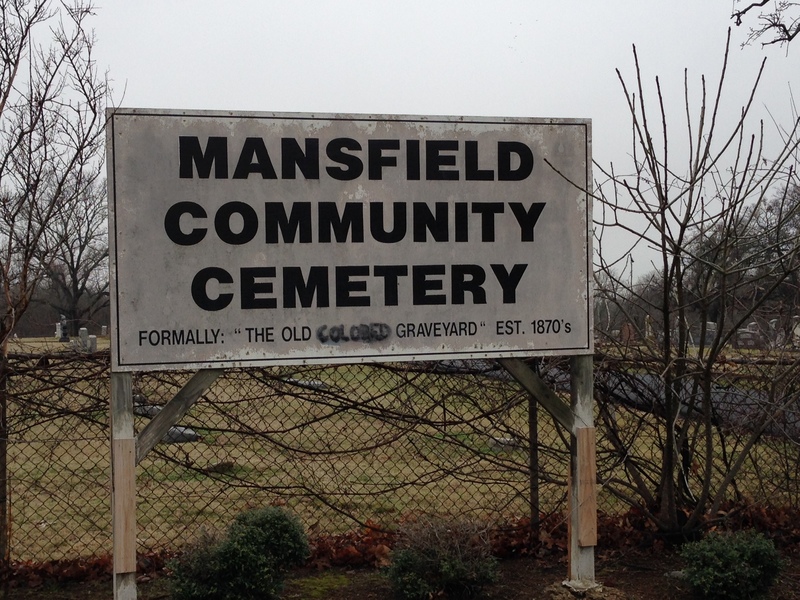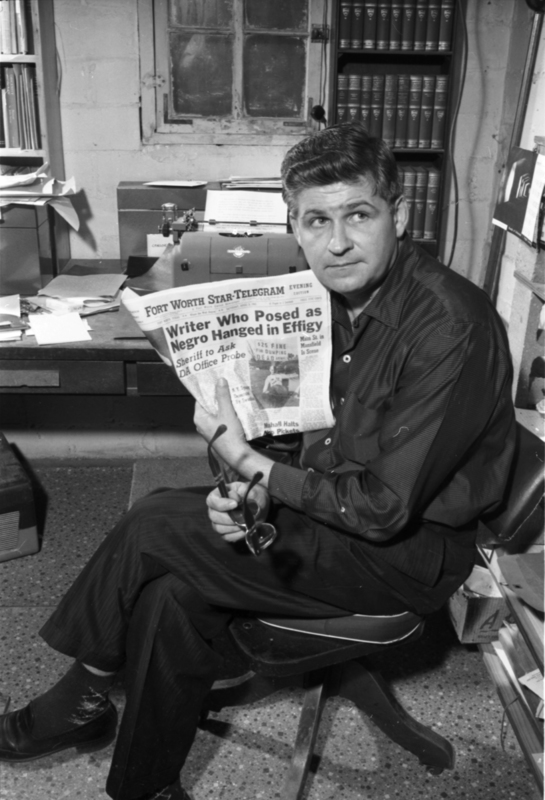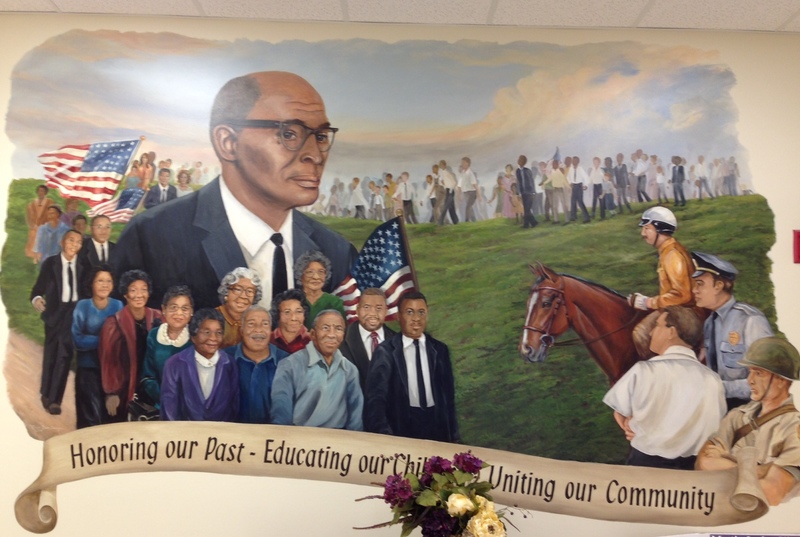Mansfield Images, after 1956

Mansfield Community Cemetery
There was a time that even the cemetery in Mansfield, Texas was divided by race. The fence and sign dividing the “Whites Only” cemetery from “The Old Negro Graveyard” still remains. At some point “Negro” was erased and replaced with “Colored,” a sign of changing times. This, one of the last physical signs of Jim Crow in Mansfield, still stands in the Mansfield Cemetery.

John Howard Griffin with Fort Worth Star-Telegram
Mansfield author John Howard Griffin, who wrote the book "Black Like Me," holds a Fort Worth Star-Telegram newspaper, which includes a photo of an effigy someone hung of him. Griffin spent most of his life studying racial equality. In "Black Like Me" he changed the pigmentation of his skin and traveled through Louisiana, Mississippi, Alabama, and Georgia to explore the different levels of discrimination African Americans faced living in the deep south.

Bethlehem Baptist Church Mural
When the addition of the T. M. Moody building was completed in 2006 at the Bethlehem Baptist Church, in west Mansfield, the church commissioned a mural in the entrance depicting the events of the Mansfield Crisis. T.M. Moody, the focal point of this mural, was a local citizen of Mansfield working with L. Clifford Davis, an attorney for the National Association for the Advancement of Colored People (NAACP), to enforce the integration of African American students at Mansfield High School after the 1955 Supreme Court decree of Brown v. Board of Education II. In the foreground of the mural on the left are recognizable residents of the African American community and some prominent members of the congregation of Bethlehem Baptist Church; in the right corner of the mural are the Texas Rangers and local law enforcement; in the background are the white residents of Mansfield. This mural stands as a memory to the congregation of the Bethlehem Baptist Church.
It should be noted that the artist employed artistic license in depicting the events of August 1956. Aside from the recognizable historical figures, the scenes borrow from other iconic images of other Civil Rights protests.